How to Plant a Church: A Guide To Successful Startups

With a recent decline in church attendance, there is a growing need to expand your ministry’s outreach. If you’re looking for ways to engage churchgoers and successfully spread your faith, church planting is a great solution.
Whether you’re already a church leader or starting from scratch, tackling a new startup is a complex venture. In this guide, we’ll explore how to plant a church and all the essentials you’ll need to know to get started:
While you can plant a church by yourself, the process requires thorough planning, documentation, and even some legal filings. A professional’s expertise can help ensure you do it right the first time around, which is why we’ve created this guide.
What Is Church Planting?
Church planting is the process of starting a church, which involves establishing a congregation, a meeting location, external ministries, and other aspects of a formal institution of worship.
However, before you can learn how to plant a church, you should be able to define it to ensure a church plant is the answer to your calling. The IRS provides 14 attributes that define a church for tax purposes:
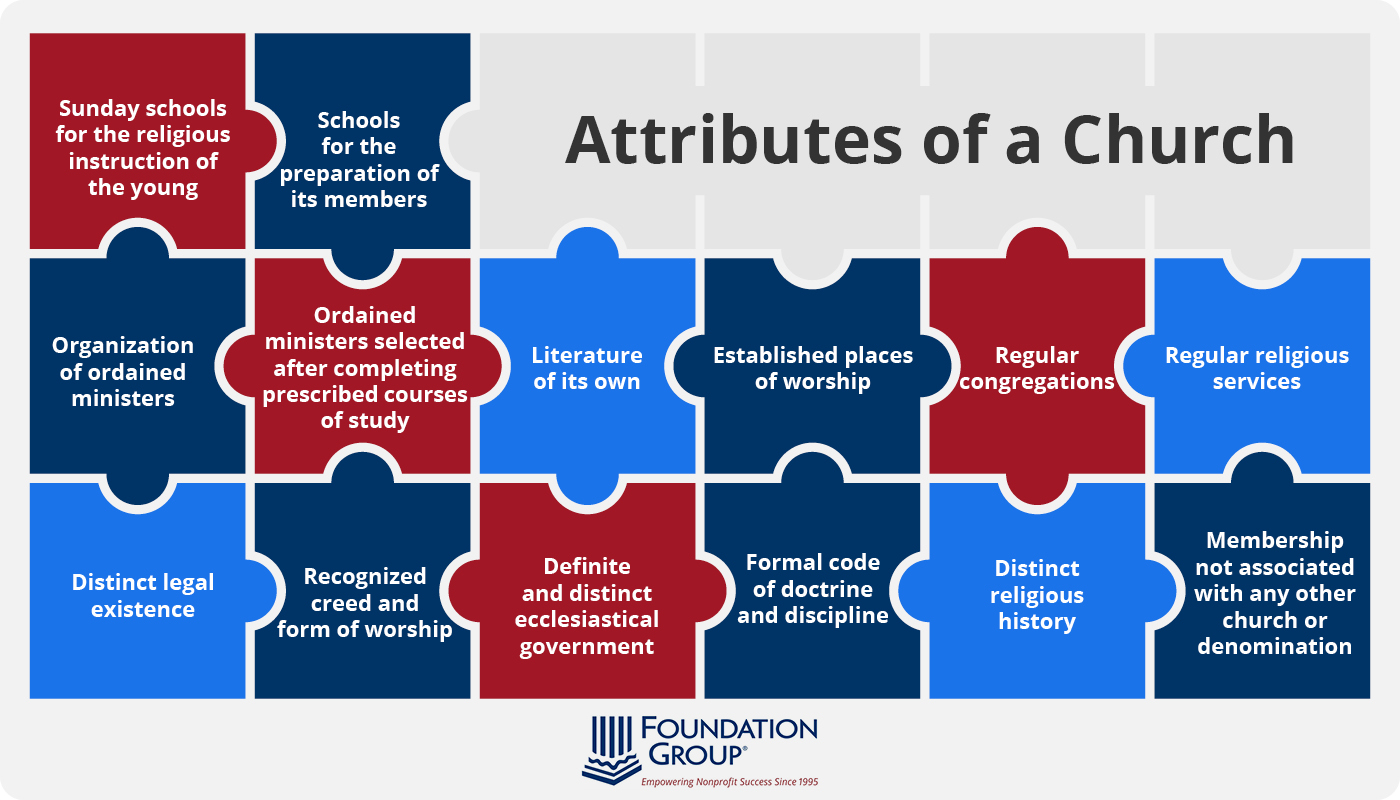
- Sunday schools for the religious instruction of the young
- Schools for the preparation of its members
- Organization of ordained ministers
- Ordained ministers selected after completing prescribed courses of study
- Literature of its own
- Established places of worship
- Regular congregations
- Regular religious services
- Distinct legal existence
- Recognized creed and form of worship
- Definite and distinct ecclesiastical government
- Formal code of doctrine and discipline
- Distinct religious history
- Membership not associated with any other church or denomination
If the organization you intend to start checks most of these boxes, you’re likely looking to plant a church. Even if this isn’t your first rodeo, the term “planting” may refer to one church startup or starting multiple branches of the same church.
How To Plant A Church
Once you’ve determined that a new church is the right move to fulfill your spiritual calling, follow these 10 steps to get started.
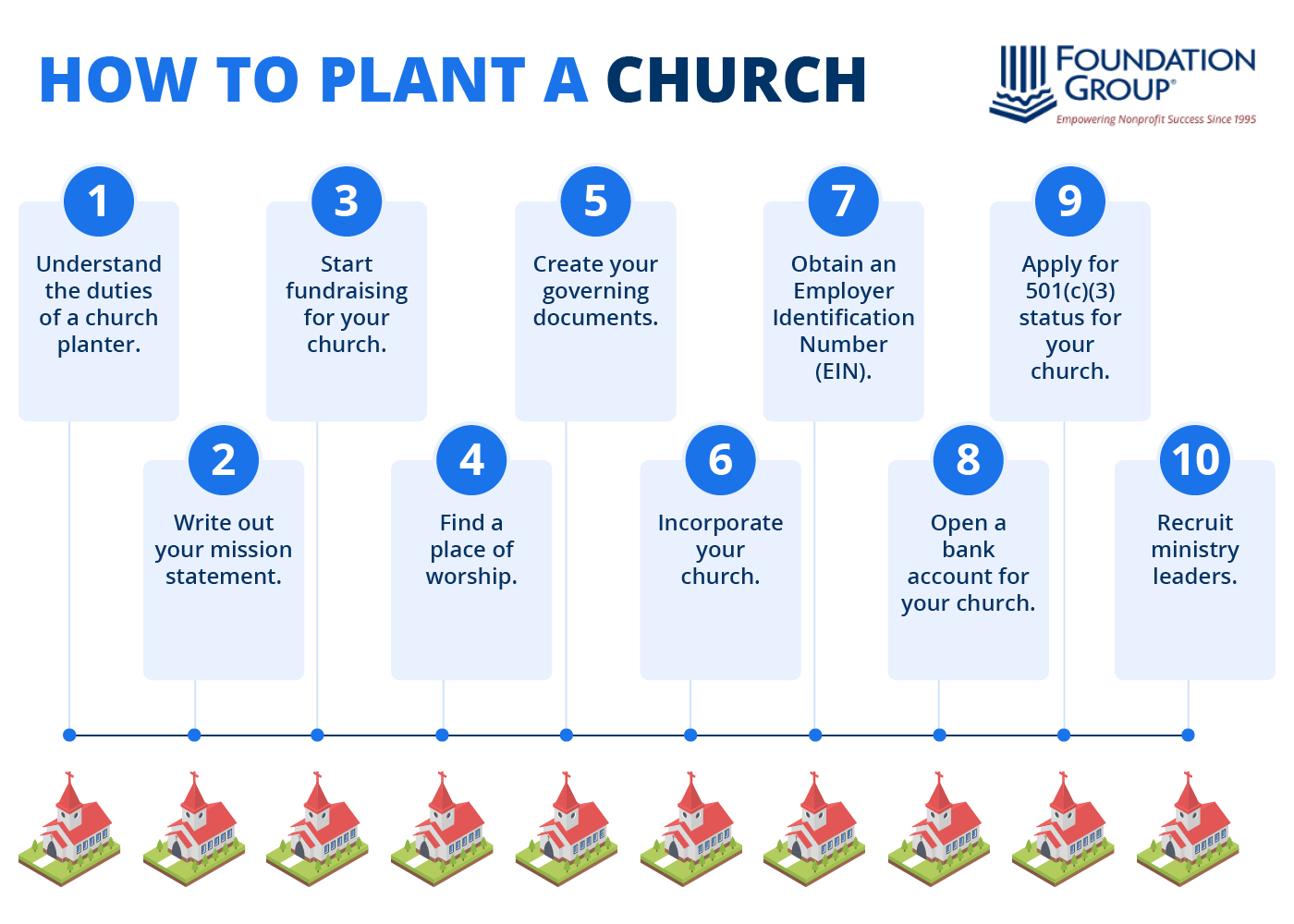
1. Understand the duties of a church planter.
If you’re reading this guide, you’re likely the church planter, or the individual responsible for planting a church. This role comes with important responsibilities, such as:
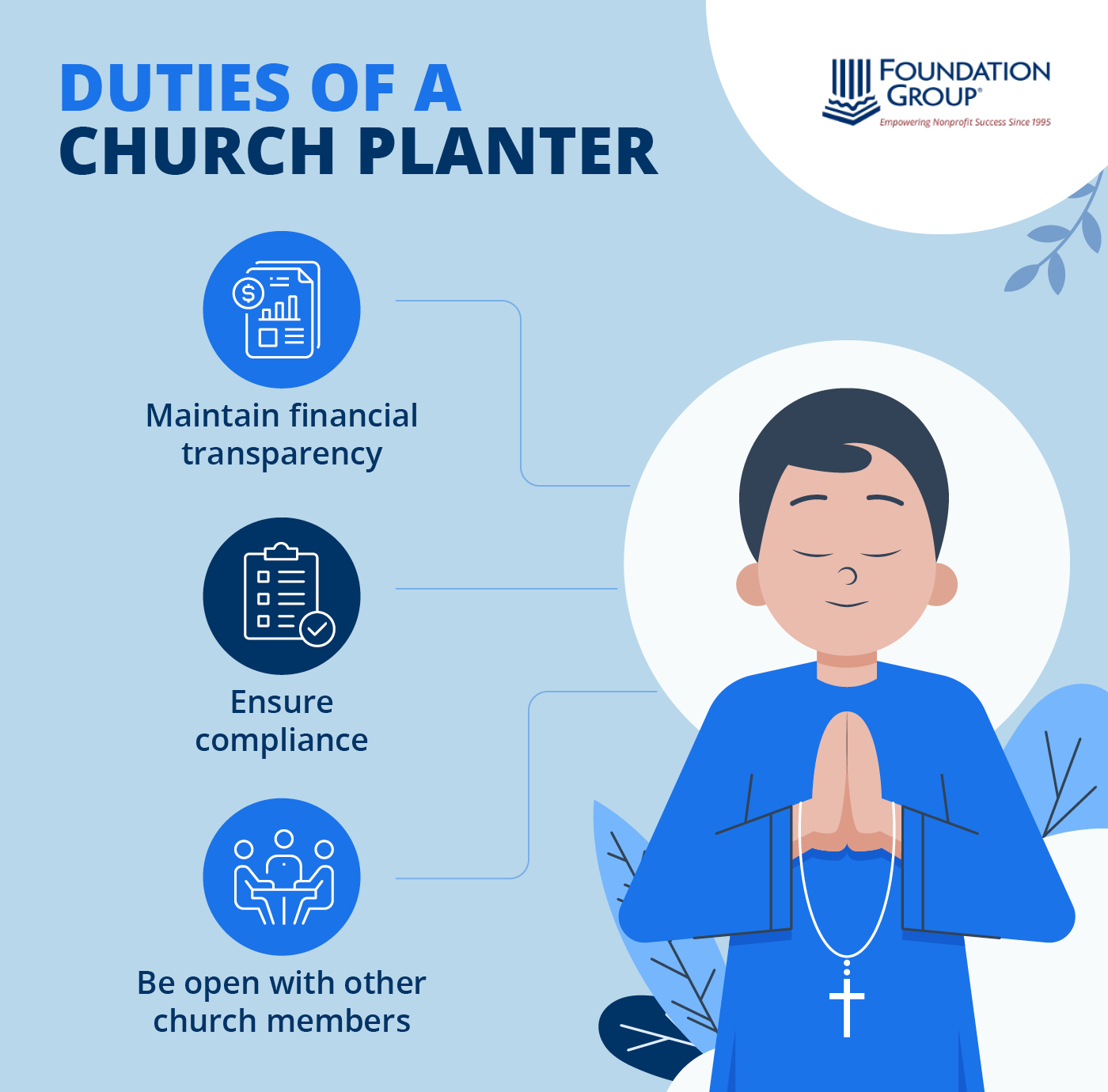
- Maintaining financial transparency: Church planters are responsible for establishing strong accounting practices from the beginning. With thorough bookkeeping and budgeting, your new church will reassure congregants that their tithes and donations are used properly to fund your ministry.
- Ensuring compliance: As you progress through the church planting process, you’ll encounter several IRS requirements. From incorporation to official 501(c)(3) status, the church planter is responsible for making sure their church is compliant.
- Being open with other church members: As the leader who spearheads this project, the church planter may become the spokesperson for the church. This individual will answer questions about the church plant, address concerns, and ultimately have a responsibility to be completely open with other church members.
These duties are central to not only church planting but also operating a church in the long term. Your startup can have multiple church planters if you choose to delegate some tasks to other members. For example, you might recruit someone with a background in finance to manage the funds used to plant your church.
2. Write out your mission statement.
If you’re wondering how to plant a church, you likely already know why you want to plant a church. A mission statement summarizes the church’s purpose and goals, and it’s a guiding resource for future decision-making. Create a mission statement that includes:
- Your church’s purpose
- The direction for your church
- Specific information about decision-making
- A clear picture of your church’s identity
Keep in mind, your church’s mission statement should be brief. Most are only a sentence or two long and under 25 words.
If you’re planting a branch of an existing church, the two branches can share a mission statement. However, this point in the church planting process is a great time to evaluate your existing mission statement and make adjustments as needed.
3. Start fundraising for your church.
Although ministry is your calling, every new church needs funds to get started. Donations are crucial to access the bare necessities for a church, let alone attract new members and minister to others.
Some effective fundraising ideas for churches include:
- Fundraising letters: Ask potential donors for contributions directly with a handwritten or digital fundraising letter that includes a compelling appeal for support. If you’re planting a new branch of an existing church, reach out to members of your existing congregation for help.
- Search engine marketing: Drive traffic to your new church’s website, where visitors can learn more about your mission and the goals of the church. Include your mission statement, and highlight ways that site visitors can contribute and help your church get started.
- Community events: Engage the community with an event, such as a fundraising dinner or car wash. By combining your fundraising and outreach efforts, not only will you raise money, but you’ll also have an opportunity to minister to others and invite them to your new church.
Depending on your state’s laws and whether or not your church obtains an official 501(c)(3) determination, you may need to complete charitable solicitations registration before requesting donations for your startup. Most states do not require churches to register, but make sure yours doesn’t before skipping this step.
4. Find a place of worship.
At this stage in the church planting process, you may not have a large congregation—and that’s okay! No matter the size of your initial congregation, your new church needs a meeting place.
Find a venue within your budget and plan room for growth. For example, you may invest in a small property on a large plot of land. In the future, you’ll have plenty of room to build more space for your church.
5. Create your governing documents.
You must write out your expectations for the church and how it will operate so they’ll be upheld throughout the church’s lifetime. The essential governing documents you must create include:
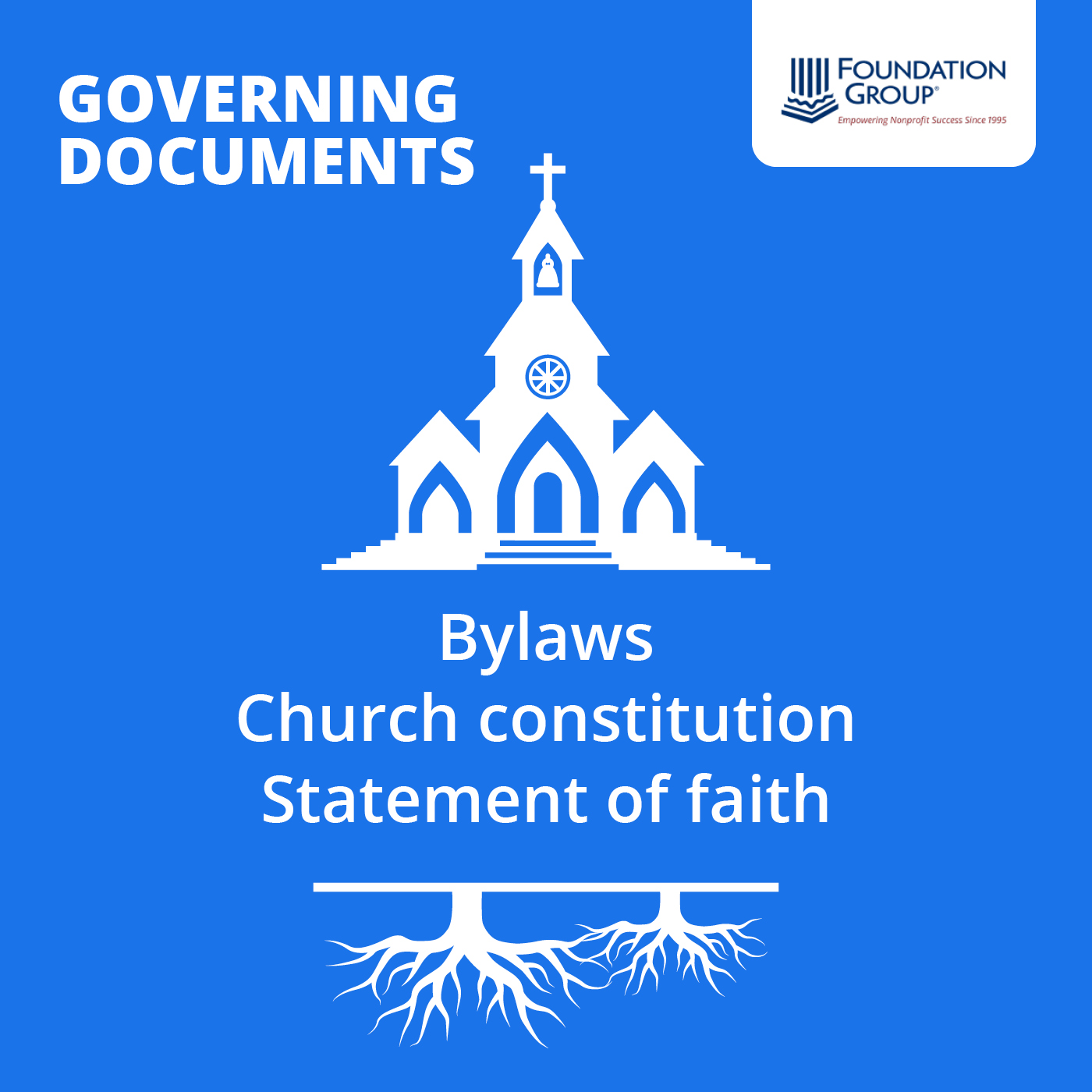
- Bylaws
- Church constitution
- Statement of faith
While creating these documents is a crucial step in the church planting process, you may need to adjust them over time. Be open to making changes in your governing documents as needed, as long as the changes align with your church’s mission.
6. Incorporate your church.
Incorporation is an optional step for starting any nonprofit organization, including churches. Before deciding whether or not to incorporate your new church plant, weigh the pros and cons:
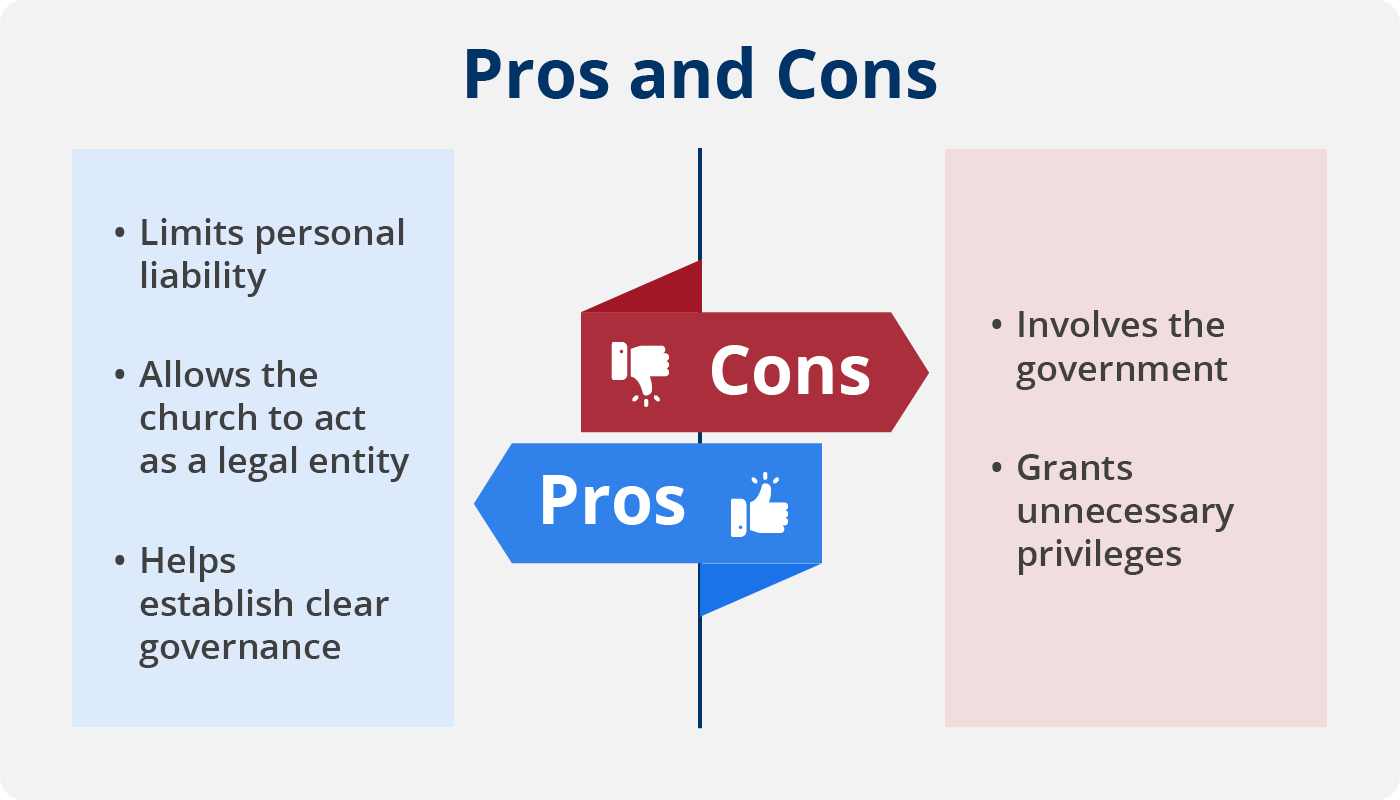
- Pro: Incorporation protects your church planter and other founding members from personal liability for the church’s actions.
- Pro: An incorporated church can act as a legal entity for transactions such as buying property or entering a contract.
- Pro: Incorporation establishes clear governance for the church.
- Con: The process of incorporation requires churches to work with and report information to the government.
- Con: Incorporation grants privileges that some churches view as unnecessary.
Although some churches would rather not involve the government in their ministry, properly prepared Articles of Incorporation allow churches to retain complete control of their actions. And the truth is, the privileges granted by incorporation are well worth it.
7. Obtain an Employer Identification Number (EIN).
A federal Employer Identification Number (EIN) is a unique identification number assigned to your church for tax purposes. As part of the church planting process, you can simply file Form SS-4 to apply for an EIN.
8. Open a bank account for your church.
As you collect donations and spend your funding to plant a church, you’ll need a bank account to put them in. Use your EIN to open a bank account in the name of your new church, and assign a treasurer or another administrative role to oversee the account.
As time goes on and your account grows, you’ll need to ensure your finances are handled properly and with transparency. Consider hiring a professional bookkeeper to manage your church’s finances and keep accurate books.
9. Apply for 501(c)(3) status for your church.
By default, the IRS considers churches to be 501(c)(3) organizations. Even without official designation, your church will be tax-exempt, and its donors may receive tax deductions for gifts given.
However, churches can still choose to officially apply for 501(c)(3) status, and there are several advantages to doing this. Here are the pros and cons of officially applying:
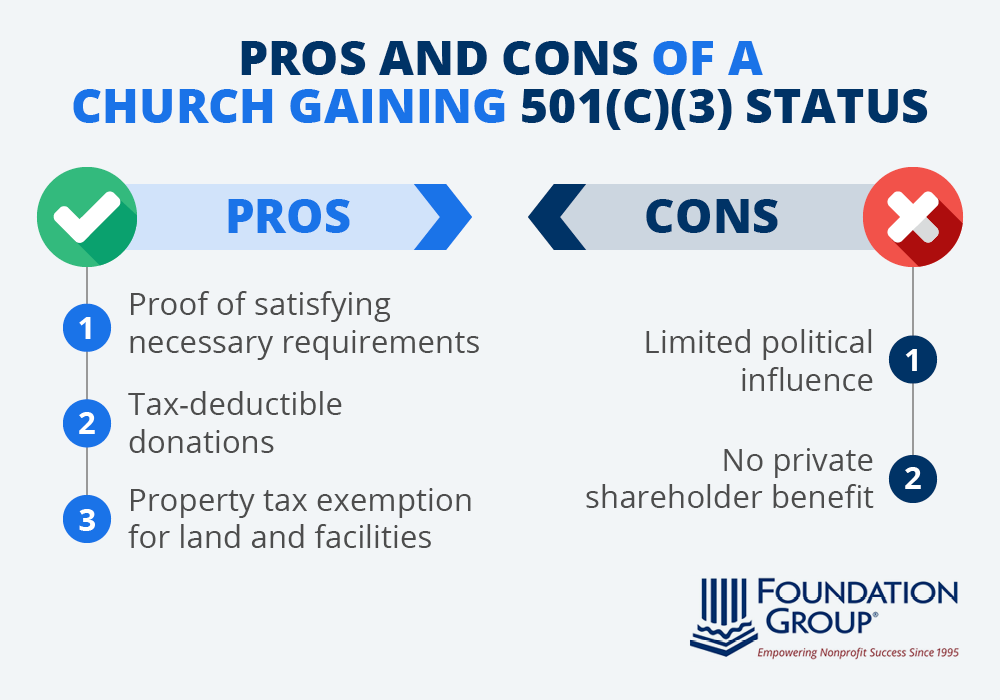
- Pro: Official designation proves your church satisfies 501(c)(3) status requirements.
- Pro: 501(c)(3) determination guarantees your congregants’ donations are tax-deductible.
- Pro: Your church plant will receive property tax exemption for its land and facilities with official 501(c)(3) designation.
- Con: Your church will have limited political influence with official 501(c)(3) determination.
- Con: No private shareholders can benefit from your church’s activities or earnings once it has been deemed a 501(c)(3) organization.
With around half of Americans unsure of the political leanings of their church’s leaders, political activity might not be a consideration at all for your church. And if your ministry is truly your top priority, private shareholders wouldn’t unfairly benefit from your church’s earnings, anyway. Needless to say, the benefits of officially applying for 501(c)(3) status far outweigh the costs.
10. Recruit church leaders.
In many of the above tips for how to plant a church, you may need professional help or expert guides to walk you through complex filings and financial information. However, when it comes to your unique ministry and calling, only you know what’s best.
Delegate leadership roles to people you can trust. If you’re planting a new branch of an existing church, ask already-established leaders if they’d like to transfer to the new church or help out temporarily.
Tools To Plant A Church
As you learn how to plant a church, you’ll find that there is a high potential for mistakes. A lot goes into church planting, and your team may not have the experience needed to complete the above steps.
For additional help in getting started and to simplify the process for your team, consider leveraging the following resources:
- Communication tools: Communication is key for church planters, especially when you delegate different tasks among a large group of people. Set up group chats, email chains, and other collaborative communications for your team. You can also utilize tools like Google Docs to collaborate on important documents and projects.
- Marketing channels: Just as church planters must communicate with each other, they should also spread the word about their new initiative through effective marketing. You can advertise your startup via social media, email marketing, or even word of mouth. All channels should point back to your church plant’s website, which you can market independently on search engines.
- Professional support: The best resource at your disposal when exploring how to plant a church is professional expertise. Compliance specialists, like the team at Foundation Group, know exactly how to draft bylaws, obtain an EIN, apply for 501(c)(3) status, and everything else associated with church planting.
Not only does professional support increase your chances of doing everything correctly for your church plant, but it frees up your time to focus on what likely matters most to you: your ministry.
Additional Church Planting Resources
Once you know how to plant a church, all that’s left is to get started. Collect your thoughts about the church’s guiding principles, and recruit a team to spearhead the process. If you’re looking to work with experienced professionals, reach out to Foundation Group’s team to talk about your goals for the plant.
For more information on starting and operating a church, check out these additional resources:
- Church Bookkeeping Services For Your Faith-Based Ministry: Looking for an expert to handle your church’s books? Check out Foundation Group’s church bookkeeping services here.
- How to Start a 501(c)(3) Nonprofit: You know that your church should apply for 501(c)(3) status, but what are the specific steps involved in that process? Learn more in this guide.
who subscribe to our free, email newsletter. It’s information that will empower your nonprofit!



Comments (0)